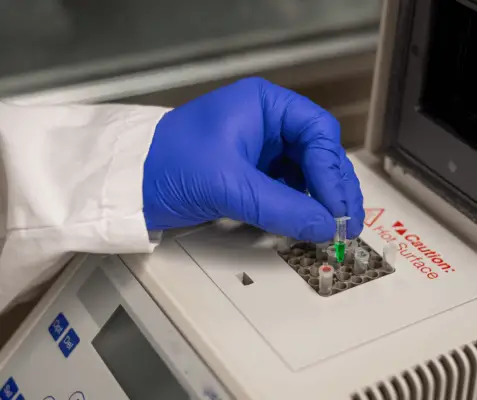Feline leukemia virus (FeLV) is a potentially deadly retrovirus that can severely compromise a cat’s health and longevity. While some cats can live with FeLV for years, the virus invariably shortens lifespans and leaves cats vulnerable to a wide range of secondary illnesses. Early detection, proper management, and attentive care are critical for cats positive for FeLV.
Certain gene variants appear associated with FeLV susceptibility and disease progression rates. This could enable genetic screening tests to identify high-risk cats. Understanding the genetic factors involved may allow veterinarians to better predict disease course in infected cats.
How FeLV Impacts Immune Function and Well-Being
Feline leukemia virus is insidious because it directly targets and impairs the immune system. The virus infects and replicates within lymphocytes, the white blood cells that normally fight infection and disease. As FeLV spreads, it leads to a decline in lymphocyte counts and suppresses immune function.

Cancer
By interfering with cell growth regulation, FeLV is associated with increased rates of lymphoma, leukemia, and mammary, oral, and intestinal tumors. Diagnosis and treatment of FeLV-related cancers can prolong survival times.
Gastrointestinal Issues
FeLV is linked to inflammatory bowel disease, diarrhea, reduced appetite, weight loss, vomiting, and malabsorption issues. Gastrointestinal problems diminish nutrient intake and quality of life.
Neurological Disorders
Some FeLV-positive cats suffer seizures, behavior changes, tremors, and paralysis potentially stemming from central nervous system impacts. Symptomatic treatment can alleviate neurological disorders.
Oral Health Problems
Due to decreased immunity, Gingivitis, stomatitis, and dental issues occur more frequently with FeLV. Good oral hygiene and extractions help manage dental complications.
While FeLV is incurable, dedicated veterinary care, lifestyle management, high-quality nutrition, and owner vigilance can prolong survival times and optimize well-being. Isolating infected cats indoors reduces transmission risk and environmental stressors that exacerbate FeLV’s effects.
How FeLV Progresses through the Body
To understand FeLV, it helps to outline its stepwise replication and dissemination process:
- Initial Infection
The virus first infects epithelial cells of the oropharynx, including the throat and lymph nodes. Replication begins immediately.
- Viremia
FeLV then enters the bloodstream and spreads systemically, infecting diverse cell types throughout the body. Viremia indicates active infection.
- Early Immune Response
The bone marrow produces FeLV-specific antibodies, but high viral concentrations overcome this initial immune response.
- Persistent Viremia
FeLV replication outpaces and suppresses the immune system’s efforts to control the virus. Viremia persists.
- Bone Marrow and Mucosal Invasion
The virus infiltrates and replicates intensely within bone marrow and mucosal sites like intestines and bladder.
- Epithelial Tissue Infection
Widespread infection of membranes and skin allows viral shedding in saliva, urine, and feces. This facilitates transmission to other cats.
Understanding FeLV’s replication strategy provides context on its eventual immune subversion and systemic effects. The key is early detection before the virus establishes persistence.
Diagnosing Feline Leukemia Virus: Tests and Interpretation
Several testing methods detect FeLV infection, each offering distinct clinical information:
ELISA (Antigen Test)
This rapid in-clinic test detects the presence of viral proteins (antigens) in the blood, indicating active infection. However, false positives are possible.

IFA (Antibody Test)
The immunofluorescent antibody assay identifies FeLV-specific antibodies produced by the immune system. This technique confirms true infection versus transient exposure.
PCR (DNA Test)
PCR (Polymerase chain reaction) detects FeLV’s genetic material (parvoviral DNA integration). It confirms true infection with minimal false results.

Bone Marrow Testing
Microscopic examination of bone marrow samples directly reveals FeLV’s cytopathic effects and aids in staging disease progression.
Interpreting results requires analyzing signalment, clinical signs, repeat testing, and potential exposure risks. No single test definitively diagnoses FeLV, but strategic testing provides a clear picture of infection status and guides appropriate care.
Caring for Cats Positive for Feline Leukemia Virus
Cats diagnosed with Feline leukemia virus warrant close veterinary supervision, lifestyle adjustments, high-quality care, and owner dedication to maximize longevity and quality of life. Recommended management strategies include:
- Tracking Clinical Changes
Routinely monitor appetite, activity levels, weight, vital signs, and any concerning symptoms. Keep the veterinarian updated on status changes.
- Prioritizing Disease Prevention
Minimize exposure to infectious agents through strict indoor housing. Follow veterinary prevention protocols like vaccines, parasite control, and dental care.
- Providing Excellent Nutrition
Feed highly digestible, nutrient dense diets. Assist eating if needed. Consult a veterinary nutritionist if weight loss, nausea, or malabsorption issues arise.

- Managing Secondary Conditions
Treat all secondary illnesses, infections, and disorders promptly and aggressively. Alleviate discomfort, maintain hydration and nutrition, and support organ function.
- Reducing Stress
Keep litter boxes extremely clean. Use synthetic cheek gland pheromones. Establish a predictable daily routine. Limit environmental changes.
- Enriching Quality of Life
Engage in relaxing activities like gentle brushing and low-impact play. Provide cozy beds in peaceful locations. Give affection daily. Celebrate small health victories.
While incurable, FeLV need not be a death sentence. Dedicated owners and veterinarians can enable FeLV-positive cats to live fulfilling lives for months or years with progressive care approaches focused on wellness.
The Fight Against FeLV: Advancing Prevention and Treatment
While FeLV remains an imposing health risk, veterinary sciences continue making strides against this complex retrovirus through enhanced prevention, diagnostic, and therapeutic innovations.
Advances in Vaccines
New generation FeLV vaccines provide broader viral subtype protection and fewer side effects. Current options include inactivated vaccines and recombinant antigen products. Veterinarians tailor vaccine protocols to each cat’s situation.
Novel Treatment Directions
Antiviral medications like azidothymidine, interferon-omega, and protease inhibitors show promising activity inhibiting FeLV transcription and assembly. Immunomodulators might also mitigate lymphopenia severity.
While much remains unknown about taming this formidable retrovirus, the expanding FeLV knowledge base propels ever closer toward optimizing prevention, diagnosis, monitoring, and treatment for cats worldwide.

